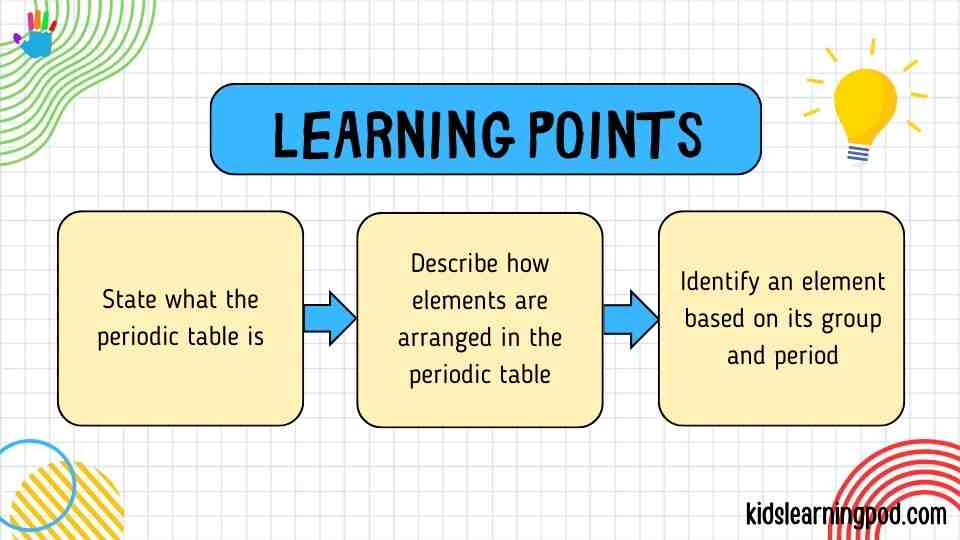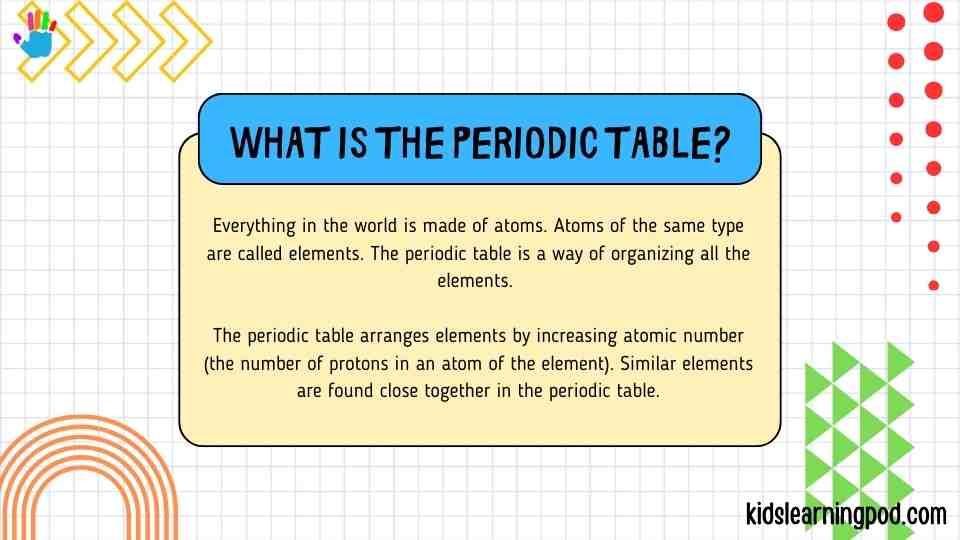Introduction
The periodic table is a cornerstone of chemistry, organizing elements in a way that reveals patterns and relationships. However, for students and even educators, mastering its layout and application can be challenging. This is where a periodic table worksheet comes in. These tools simplify the learning process, making abstract concepts more accessible. In this article, we will explore how periodic table worksheets can make learning chemistry engaging and provide 10 creative ways to maximize their effectiveness.
What is Periodic Table Worksheet?
A Periodic Table Worksheet is a structured educational tool that helps learners understand the organization and properties of elements in the periodic table. These worksheets often include activities such as labeling elements, identifying groups, and solving chemical problems.
An effective worksheet should include clear instructions, visually engaging layouts, and questions that challenge learners to apply their knowledge. For a wide variety of examples, check out Education.com.
Why Use a Periodic Table Worksheet for Learning?
Worksheets are invaluable tools for both students and teachers. Here are some reasons why:
- Enhanced Understanding: Worksheets break down complex information into manageable chunks, fostering comprehension.
- Interactive Learning: Engaging activities promote active learning rather than passive memorization.
- Time Efficiency: Teachers can save time by using pre-designed worksheets aligned with curriculum goals.
These worksheets also provide measurable outcomes, making it easier for teachers to assess student progress.

Types of Periodic Table Worksheets
Fill-in-the-Blank Worksheets
These worksheets require students to label elements, groups, or periods on a blank periodic table, reinforcing their understanding of its layout.
Interactive Digital Worksheets
Digital worksheets, often paired with apps or websites like Khan Academy, provide interactive features such as drag-and-drop labeling and instant feedback.
Quizzes and Puzzles
Worksheets designed as crosswords or matching games make learning fun while testing knowledge on key concepts like atomic numbers and electron configurations.

How to Choose the Right Periodic Table Worksheet
Choosing the appropriate worksheet depends on the learner’s needs and skill level. Here are some tips:
- Difficulty Level: Beginners may need worksheets focused on element names and symbols, while advanced learners can explore periodic trends and reactivity.
- Curriculum Standards: Ensure the worksheet aligns with local educational guidelines to cover essential topics.
- Format: Decide between printable or digital formats based on accessibility and convenience. For printable resources, visit Teachnology.
10 Creative Activities to Complement Your Worksheet
Maximize the impact of periodic table worksheets by integrating these engaging activities:
- Crosswords: Create puzzles that require filling in element names or properties.
- DIY Periodic Table: Students build their periodic table using household items or craft supplies.
- Group Discussions: Encourage collaborative problem-solving on trends like electronegativity and atomic radius.
- Periodic Table Scavenger Hunt: Challenge students to find items in their environment that represent specific elements.
- Role-Playing: Assign elements to students and let them explain their properties in character.
- Song Creation: Encourage students to memorize elements through catchy songs.
- Flashcards: Use flashcards for quick quizzes on element names, symbols, and numbers.
- Lab Experiments: Pair worksheets with hands-on experiments involving elements like hydrogen or oxygen.
- Color Coding: Worksheets that involve coloring elements by groups or periods aid visual learning.
- Video Tutorials: Pair worksheets with videos from platforms like CrashCourse for a multimedia learning experience.
Periodic Table Worksheet for Chemistry Beginners
For beginners, worksheets should focus on foundational knowledge, such as:
- Understanding element groups like alkali metals and noble gases.
- Learning periodic trends such as atomic size and ionization energy.
- Including real-world examples to connect concepts with practical applications.
Printable beginner worksheets are available at ScienceGeek.net.
Kindly Allow Pop ups to let the Download Begin!

Advanced Periodic Table Worksheet Ideas for Experts
For more experienced learners, explore complex topics such as:
- Predicting chemical reactions based on element properties.
- Understanding periodicity in elements’ physical and chemical characteristics.
- Analyzing electron configurations and bonding behaviors.
Find advanced-level worksheets and exercises at ChemistryGod.
Incorporating Periodic Table Worksheets in Online Learning
Online education platforms have revolutionized the use of periodic table worksheets. Tools like Google Classroom allow for easy sharing, grading, and collaboration. Consider using platforms such as Edmodo or Quizizz to distribute and manage digital worksheets effectively.
Printable vs. Digital Periodic Table Worksheets: Which is Better?
Each format has its advantages:
- Printable Worksheets: Perfect for hands-on activities and offline learning environments.
- Digital Worksheets: Allow for interactivity and real-time feedback, ideal for online learning settings.
For an eco-friendly approach, consider reusable laminated worksheets or digital-only formats.
Periodic Table Worksheet FAQs
How often should students use these worksheets?
Students should use worksheets regularly, ideally once a week, to reinforce their knowledge and skills.
Are there worksheets tailored for special needs students?
Yes, many resources, such as Twinkl, offer worksheets adapted for students with different learning abilities.
Where to Find High-Quality Periodic Table Worksheets
High-quality worksheets can be sourced from:
Guess the Periodic Table Worksheet Element by Symbol
Conclusion
Periodic table worksheets are invaluable tools for mastering chemistry basics. From beginners to advanced learners, these worksheets cater to various skill levels and learning styles. By incorporating creative activities and leveraging digital tools, educators can make learning the periodic table both effective and enjoyable. Start exploring the resources shared in this guide and watch your chemistry knowledge grow!
How to learn periodic table 1 to 20 easily?
Another effective approach is to use flashcards with the element’s name on one side and its symbol, atomic number, and a fun fact on the other. Digital tools like interactive periodic table apps or games also help make learning engaging. Visual learners may benefit from color-coding elements based on their groups (e.g., metals, nonmetals, noble gases) and studying periodic trends like atomic size and reactivity within these groups. Consistent practice and revision are key to mastering the order and properties of these foundational elements.
How to teach periodic table easily?
Technology can also play a crucial role in teaching the periodic table effectively. Incorporate videos, quizzes, and digital simulations to demonstrate complex concepts like periodicity or atomic structure in a more accessible way. Relating elements to their real-world applications, such as helium in balloons or iron in construction, helps students understand the relevance of the periodic table. By combining interactive tools with regular practice worksheets, teachers can ensure students grasp the foundational concepts with confidence.
What is 7 of the periodic table?
Nitrogen exists as a diatomic molecule (N₂) in its natural state and is colorless, odorless, and mostly inert under standard conditions. Despite its stability in the atmosphere, nitrogen compounds like ammonia (NH₃) are vital in agriculture, as they are used in fertilizers to enrich soil fertility. Additionally, liquid nitrogen is used in cryogenics and food preservation, showcasing the element’s versatility in industrial and scientific applications.
What are the 20 basic elements of a periodic table?
These elements serve as the building blocks for understanding chemical reactions and compounds. For example, hydrogen and oxygen form water, while sodium and chlorine create common table salt. Familiarizing yourself with their symbols, atomic numbers, and basic properties sets a strong foundation for learning more complex chemical concepts.
How to remember 1 to 30 elements?
Another strategy is visual association. Create a chart or flashcards and group elements by their similar properties (e.g., alkali metals, noble gases). Digital periodic table apps and interactive quizzes are also excellent for reinforcing memory through repetition. Color-coding elements based on their groups or periods helps learners recognize patterns in their properties, making it easier to recall the sequence and relationships between the elements.
How to know valency?
A quick way to deduce valency is to refer to the periodic table’s group number. For Groups 1-2 and 13-18, the group number provides a clue: Group 1 elements have a valency of +1, Group 2 elements have +2, and so on. Transition metals, however, may exhibit variable valencies due to their ability to lose electrons from inner shells. Understanding trends and practicing with periodic table examples is key to mastering valency concepts.
What is the formula trick for the periodic table?
Another trick involves periodic trends like atomic size, ionization energy, and electronegativity. Memorizing that atomic size increases down a group and decreases across a period can simplify predicting element properties. Similarly, trends in electronegativity (which increases across a period and decreases down a group) are vital for understanding bond polarity. Practice these rules with examples like water (H₂O) and methane (CH₄) to solidify your understanding.
What are 118 elements?
Each element has practical uses or scientific significance. For instance, carbon is fundamental to life, while uranium (atomic number 92) is used in nuclear power. The heavier elements, especially those beyond Uranium, are synthetic and created in laboratories. These superheavy elements often have extremely short lifespans and exist only for scientific research purposes.
How to find atomic mass?
(35×0.75)+(37×0.25)=35.5 amu.
(35 \times 0.75) + (37 \times 0.25) = 35.5 \, \text{amu}.(35×0.75)+(37×0.25)=35.5amu.
In practice, you can look up atomic masses directly on the periodic table. These values are listed below the element symbols and are usually close to whole numbers for elements with a dominant isotope. However, for elements with multiple stable isotopes, the atomic mass often appears as a decimal, reflecting the averaged values.
What is group 0 called?
Due to their stability, noble gases are rarely involved in chemical reactions. However, they have significant applications: helium is used in balloons and as a cooling medium, argon is used in welding, and neon is famous for its use in neon signs. Their lack of reactivity also makes them ideal for use in creating inert environments for sensitive experiments.





